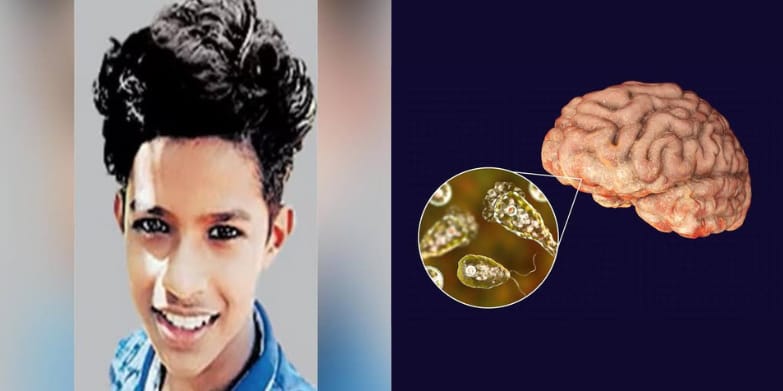In the Alappuzha district of Kerala, a child aged 15 passed away. Veena George, the state’s minister of health, disclosed that Naegleria fowleri, also known as the “brain-eating amoeba,” was to blame for the fatality, which resulted from a primary amoebic meningoencephalitis (PAM), a rare brain infection. According to the media reports, in 2016 a case of this disease appeared at Alappuzha Hospital’s Thirumala ward. In addition, George revealed that there had already been five cases in the State of such a rare infection.
It is an uncommon condition, and only a single person in 10,000 contacts it. Appropriate measures have been taken by the Department of Public Health to ensure that the area in which this disease occurred is sanitized. She said, in an official communication that was quoted by a number of media outlets, only five people had been affected before.
Indian Express said that the boy passed away following a week of high fever and a sharp decline in his vital signs. Additionally, according to Indian Express, he used to bathe in a brook close to his house, which is most likely where the amoeba came from.
How do people get infected by brain eating amoeba?
The CDC says that Naegleria fowleri is transmitted to the human body by water containing amoeba which enters through the nose. This is often observed in lakes and rivers where people go swimming, diving or putting their heads underwater.
When the amoeba enters the nose, it breaks down the nose to the brain, destroying the brain tissue causing a devastating infection called Primary Amebic Meningoencephalitis(PAM) . PAM is mostly fatal, warns CDC.
The CDC also points out that people who drink contaminated drinking water and use the same to clean their nose might be at the risk of developing this rare infection.
The ameba can be found in the following places:
Warm fresh water, lakes and rivers. geothermal natural hot water, hot springs, industrial or power plants discharge warm water, untreated geothermal water sources, natural hot drinking water sources, swimming pools, splash pads, surf parks, or other recreational venues that are poorly maintained or don’t have enough chlorine in them, tap water, water heaters, soil including sediments in lakes, ponds and rivers.In salt water, as in the ocean, Naegleria fowleri is not present.
What are the symptoms of brain eating amoeba infection?
The CDC says PAM is hard for them to detect because of the rapid development of the disease. After a patient’s death, the diagnosis may occur.
Some of the symptoms include:
Severe frontal headache
Fever
Nausea
Seizures
Altered mental status
Hallucinations
Coma
Vomiting
Stiff neck
What are the treatment options for this infection?
The CDC notes that, in many cases, combination therapy consisting of amphotericin B, Azithromycin, Fluconazole, Rifampin, Miltefosine and Dexamethasone has been used to treat this uncommon infection. The majority of infections reported are, however, fatal. People in contact with warm freshwater bodies are often advised to avoid swimming or diving. They should wear nose clips or hold their head out of the water.
Can you be infected with Naegleria fowleri from a pool that’s been properly cleaned?
No. There is no risk when the chlorine levels are regularly monitored and there is regular maintenance of hygiene.
In order to manage natural water sources, what preventive measures can be taken?
Limit the time spent in warm freshwater bodies like ponds, lakes, and hot springs unless they are chlorine-disinfected. Wear a nasal mask while swimming or diving, keep swimming pools clean, practice good hygiene and wash your hands thoroughly with soap and while cleansing the nose, use sterile water.

